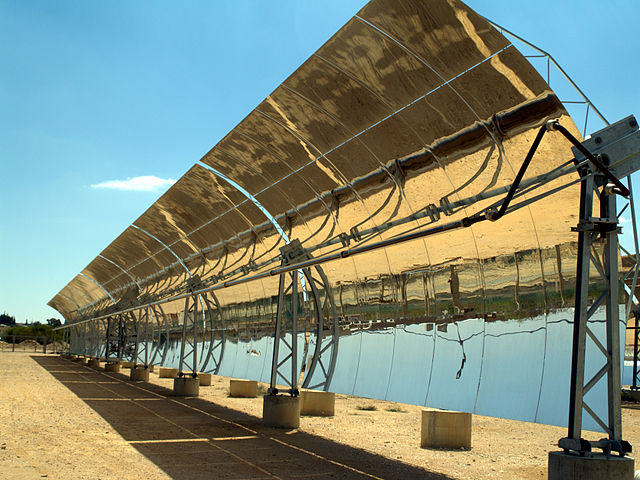Discover how solar thermal power plants, equipped with parabolic trough collectors, are revolutionizing the renewable energy landscape. These innovative technologies harness hemispherical mirrors to efficiently concentrate sunlight, thus providing an inexhaustible and non-polluting source of energy. Thanks to their ability to minimize the circulation of heat transfer fluid, these systems ensure a high concentration factor, maximizing their energy efficiency. Adapted for uninterrupted operation, they represent a significant advancement in reducing our carbon footprint while benefiting from sustainable and cost-effective technology.
Parabolic trough collectors are cutting-edge devices in the production of solar thermal energy. They work by aligning long curved mirrors that concentrate sunlight on receiver tubes. This inventive shape allows them to capture maximum solar energy and reduce thermal losses. The collectors are installed parallel to each other, ensuring optimal concentration of sunlight on the receivers placed at the center of the mirrors.
One of the main advantages of parabolic trough collectors is that they harness an inexhaustible and free energy source: the sun. Unlike fossil fuels, which are dwindling in reserves, solar energy is available in unlimited quantities. Furthermore, these systems generate no polluting emissions during their operation, making this technology environmentally friendly and contributing to the reduction of greenhouse gas emissions.
Another notable advantage of parabolic trough plants is their ability to operate without interruption. By effectively using solar energy and a high thermal concentration system, they can store heat and release it even when the sun is not shining. This ensures a constant energy production, regardless of climatic variations.
The operation of these plants also minimizes the circulation of heat transfer fluid, resulting in reduced maintenance and operational costs. Efficient insulation allows for a very high concentration factor, thereby optimizing overall thermal efficiency. This is particularly important in reducing energy costs over the long term, making this technology not only eco-friendly but also economically advantageous.
However, like any technology, parabolic trough collectors have their challenges. Their installation requires considerable space, as the collectors must be spread over large sunny areas to capture sufficient sunlight. Additionally, their complex design necessitates significant technical expertise, which can represent a barrier for some businesses or individuals wishing to adopt this technology.
In summary, parabolic trough plants represent one of the most popular and effective solutions in the field of thermodynamic solar energy. They tap into the immense potential of the sun, offering a reliable and sustainable alternative to traditional energy sources. While posing some logistical challenges, their advantages in environmental and economic terms make them a top choice for sustainable development initiatives.

Q: What is a parabolic trough plant?
A: A parabolic trough plant uses hemispherical mirrors to concentrate solar radiation onto tubes, converting solar energy into heat.
Q: What are the main advantages of parabolic trough plants?
A: They offer an inexhaustible and free source of energy, generate no polluting emissions, and can operate continuously.
Q: Why is this technology considered efficient?
A: Due to their curved mirrors, plants with parabolic trough collectors can achieve a very high concentration factor, thus maximizing energy efficiency.
Q: What are the limitations of this technology?
A: Although they are very efficient, they require a high level of sunlight to operate optimally, which can limit their geographic implementation.
Articles similaires
Thank you!
We will contact you soon.













